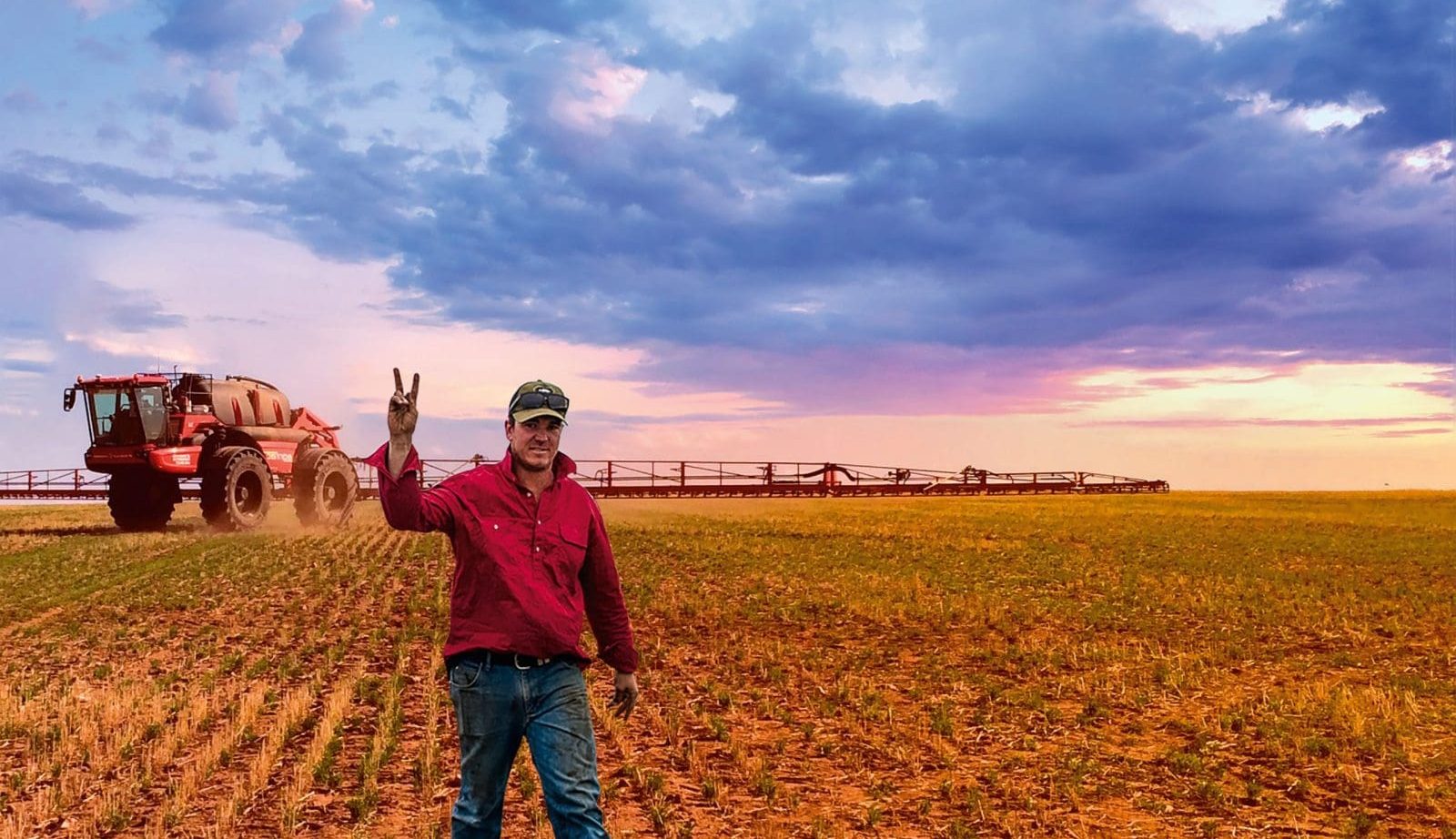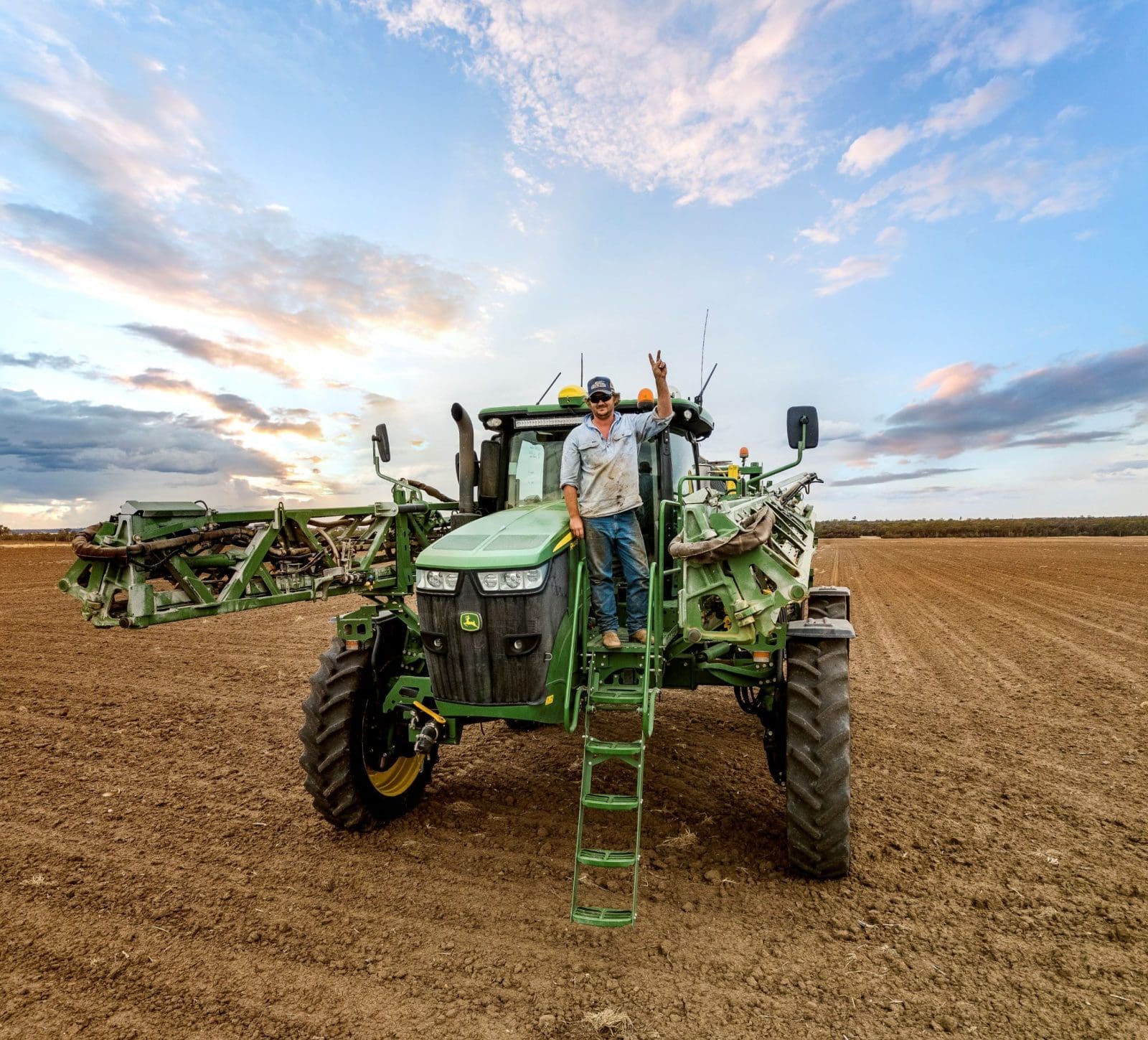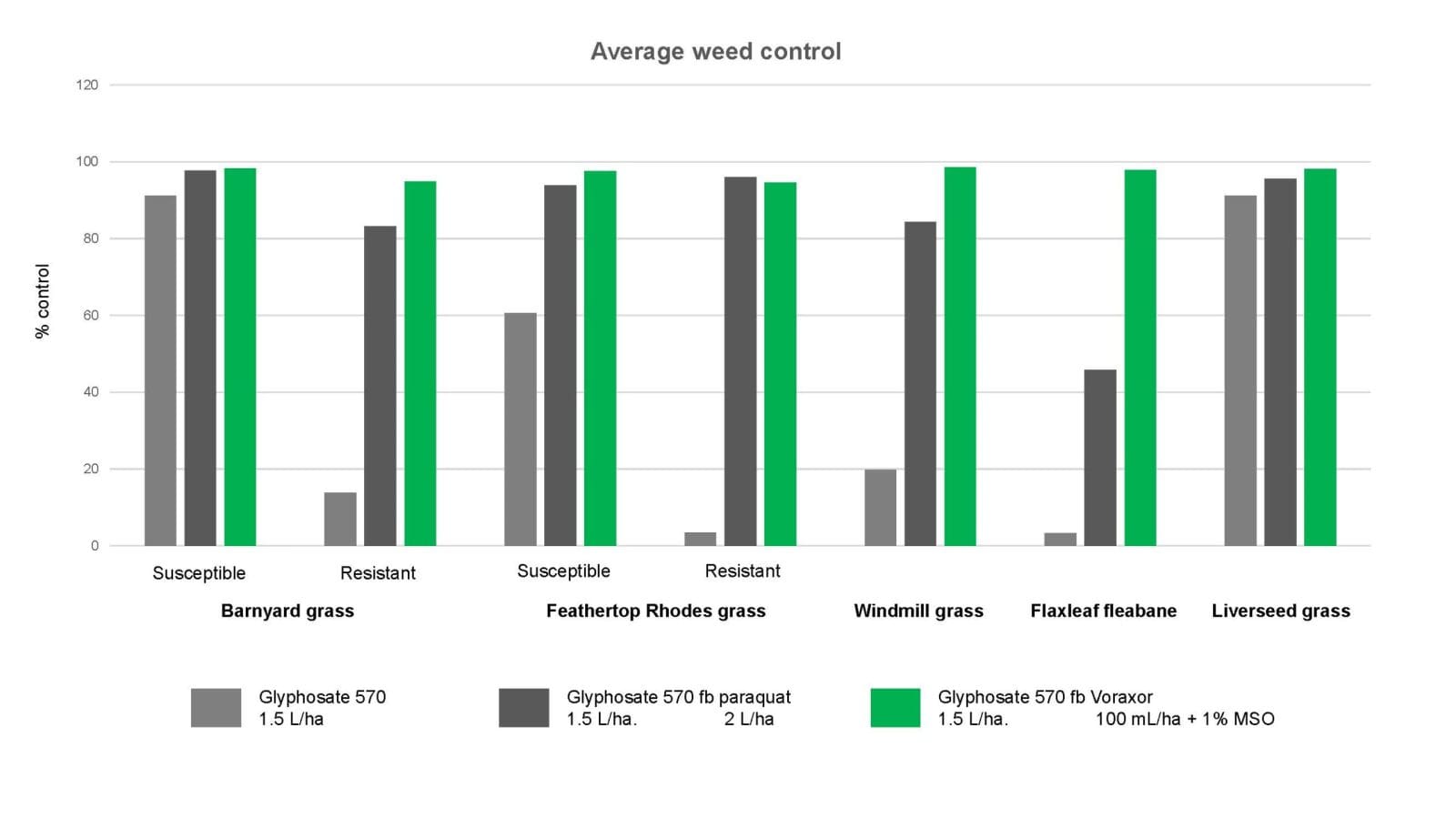
ONE of the key benefits of BASF’s Voraxor herbicide is its ability to provide market-leading performance in more ways than one: it’s both an outstanding pre-emergent herbicide with unbeaten residual on broadleaf weeds and some grasses, and it’s a top-level knockdown spike, improving glyphosate performance on broadleaf weeds and annual ryegrass.
Research shows that Voraxor’s versatility can also help solve a developing problem with current double-knock strategies while still delivering all the other benefits growers value.
The double-knock strategy was developed in response to the progress of glyphosate resistance.
The most common combination is a first spray of glyphosate (mode-of-action Group 9) followed by an application of paraquat (Group 22) to clean up all the surviving weeds glyphosate has failed to control.
The long-term weakness in that approach is that it relies on a single mode of action year after year to clean up weeds that have already survived one spray.
But now there’s also the more pressing issue that the future of paraquat is under a cloud.
Its use has been prohibited in the European Union since 2007 based on safety concerns.
Paraquat has since been banned in several other countries.
The Australian Pesticides and Veterinary Medicines Authority is reviewing its use here and proposing a ban on at least the higher application rates.
The public consultation process has just finished and the final decision will be announced at the end of January 2025.
“There’s great news for growers from a recent conference paper based on years of work at the BASF CropSolutions Farm in Tamworth,” BASF head of agricultural solutions Parvana Wali said.
“The results show that, whether or not growers still have the option of using paraquat, Voraxor is probably a more effective option as the second knockdown herbicide anyway, even when used at the lower label rate.
“If you apply it at one of the higher label rates at the most strategic timing, you can probably expect even better knockdown control and it will provide up to 12 weeks of excellent pre-emergent control as well.”
Voraxor’s capacity to help control annual ryegrass (ARG) is already well established.
The label includes registrations for knockdown of both susceptible and glyphosate-resistant ARG and a “grass assist” boost to pre-emergent ARG control.

The 2019-22 research looked at control of five other grass weeds, predominantly in 18 field trials that were managed to encourage the growth of glyphosate-tolerant populations.
They all took place between September and February and the sites included a range of different soil types.
Five randomised pot trials were conducted during the same period to establish direct comparisons between populations of feathertop Rhodes grass and barnyard grass known to be resistant or susceptible to glyphosate.
Each trial compared the impact of three treatments:
- a single application of glyphosate 570 at 1.5 L/ha;
- glyphosate 570 @ 1.5 L/ha followed 7 days later by paraquat @ 2 L/ha;
- glyphosate 570 @ 1.5 L/ha followed 7 days later by Voraxor @ 100 mL/ha + 1pc MSO.
As the graph shows, using Voraxor as the second knock averaged better control than the paraquat option against every weed except resistant feathertop Rhodes grass, and even in that case, the difference was not statistically significant.

Looking at the data, growers may still be tempted to stick with paraquat while it’s working
reasonably well.
But what strongly tips the balance in Voraxor’s favour is the option of applying it at its higher label rates – 200 or 240mL/ha – in a tank-mix with a premium grass-weed herbicide like Luximax or Sakura.
The higher rate is likely to provide enhanced knockdown control and will also deliver market-leading pre-emergent control of all the most damaging broadleaf weeds.

Three treatments: at left, Glyphosate 570 at 1.5L/ha; at centre, Glyphosate 570 at 1.5L/ha followed by paraquat at 1.6L/ha; at right, Glyphosate 570 at 1.5L/ha followed by Voraxor at 100ml/ha + 1pc MSO.
“Growers are always looking for the best return on investment just as much as a few percent of extra control.”
“Taking full advantage of Voraxor as both a knockdown and pre-em in a single application will give them exceptional value for money as well as great results.
“And we have plenty of data to show that if they tank-mix Voraxor with Luximax or Sakura in lighter soils, they can also expect even better ARG control than those products normally provide.”
For more information on Voraxor please visit https://crop-solutions.basf.com.au/products/voraxor
Source: BASF

HAVE YOUR SAY